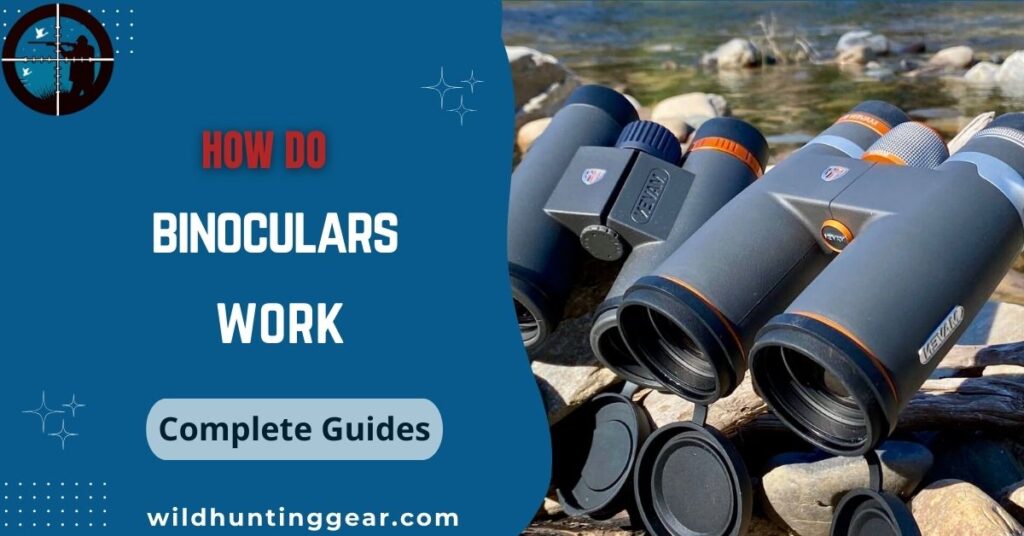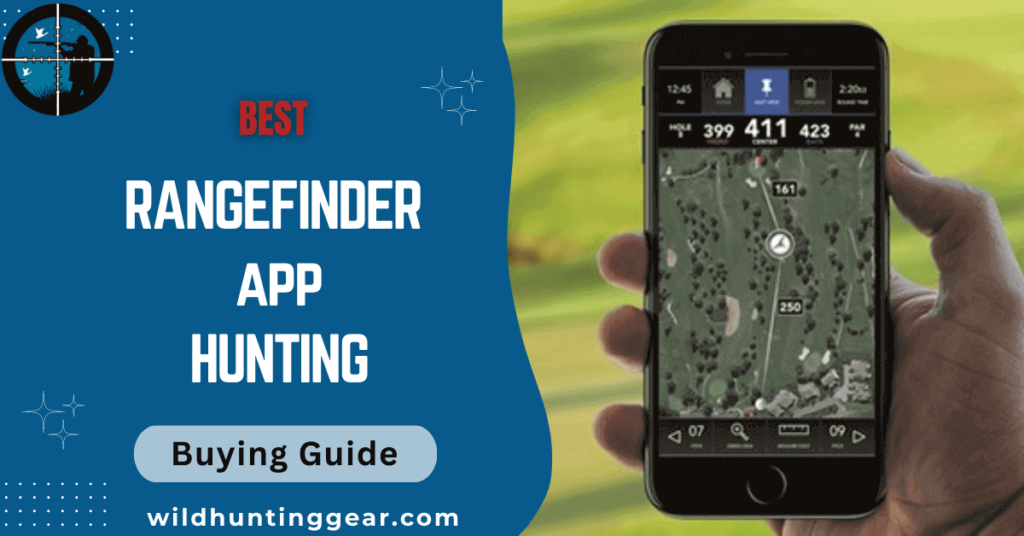From birdwatchers to astronomers and sports enthusiasts to marine navigators, binoculars are an essential tool for countless people in our daily lives. These optical wonders have drastically increased our ability to observe distant objects in stunning detail, becoming indispensable companions on countless adventures. In this article, we will explore the fascinating history and working principle of binoculars and reveal the magic behind their dual lenses.
A Brief History of Binoculars
While telescopes have long been recognized as one of the great optical inventions, binoculars share a rich history that is often overshadowed by their single-tube counterparts. The first binocular-like device can be traced back to the early 17th century when Dutch mathematician and inventor, Hans Lipperhey, put two telescopes together side-by-side. The design evolved over the centuries, eventually becoming the modern-day binoculars we know today.

Binoculars differ from other optical instruments, such as telescopes or monocles, in that they provide simultaneous viewing with both eyes. This dual-eye perspective allows for improved depth perception and a broader field of view, making them the perfect companion for various applications across numerous fields.
The Magic Behind Binoculars
To understand the working principle of binoculars, we must first familiarize ourselves with their main components:
- Objective lenses: These large lenses at the front of the binoculars collect and focus light to create a sharp image.
- Prism system: Located between the objective lenses and eyepieces, the prisms correct the orientation of the inverted image while also providing magnification.
- Eyepieces: These smaller lenses sit closest to your eyes and help adjust focus and magnification to cater to each individual’s vision.
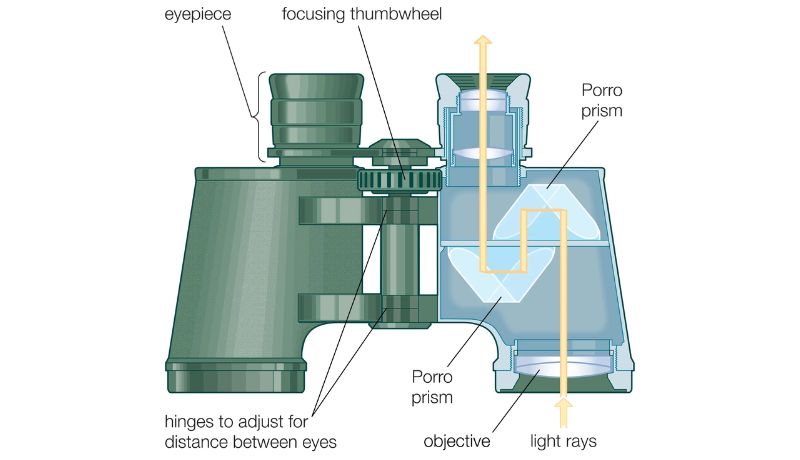
Imagine you are gazing through your binoculars at a distant bird perched on a tree. The light emitted from the bird enters the binoculars and first passes through the objective lenses. These lenses collect the light and focus it, starting the process of creating a clear image. Although the light is focused, it is still inverted at this stage.
This is where the prisms come into play. The prisms not only correct the orientation of the image (flipping it right-side up), they also provide additional magnification. By bending the light and bouncing it through multiple internal reflections, the prisms are essential to producing a magnified and properly oriented image.
Finally, the light reaches the eyepieces, which further adjust focus and magnification. By moving the eyepieces closer or farther away from the prisms, users can fine-tune the image to cater to their specific vision needs. The image then travels through the eyepieces and into your eyes, bringing the distant bird into sharp, magnified focus.
Here’s an interesting fact: The “exit pupil” is the small circle of light you see when holding your binoculars at arm’s length. This circle is essentially where all the light gathered by the objective lenses is focused and its size plays a significant role in the brightness of the image in low-light conditions.
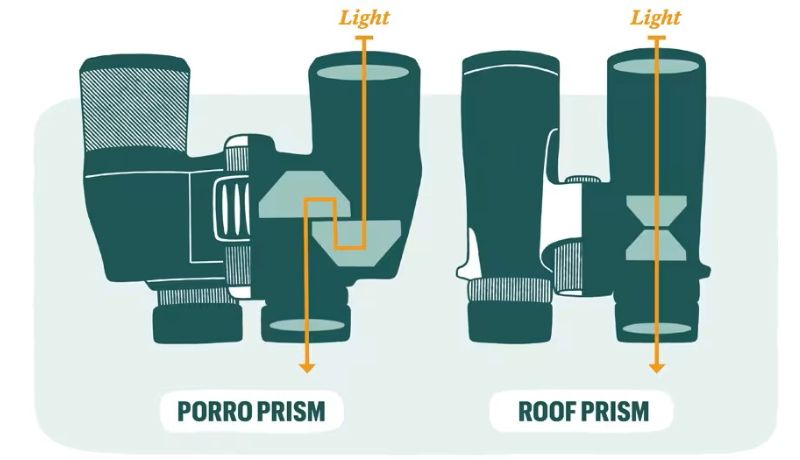
The Ongoing Significance of Binoculars
Binoculars have come a long way since their invention and have continued to evolve to meet the demands of various applications. Today, we find specialized binoculars tailored for specific needs, such as image-stabilized binoculars that compensate for shaky hands or compact binoculars perfect for travel.
With advancements in technology, binoculars have become even more powerful and versatile. Digital binoculars now exist that can capture photos and record videos, making them a favorite among nature enthusiasts and adventurers alike.
In addition to leisure activities, binoculars also play a crucial role in fields such as military reconnaissance, surveillance and rescue operations. Their ability to provide a magnified view with improved depth perception makes them invaluable tools in these high-stakes scenarios.
How to Use Binoculars Effectively
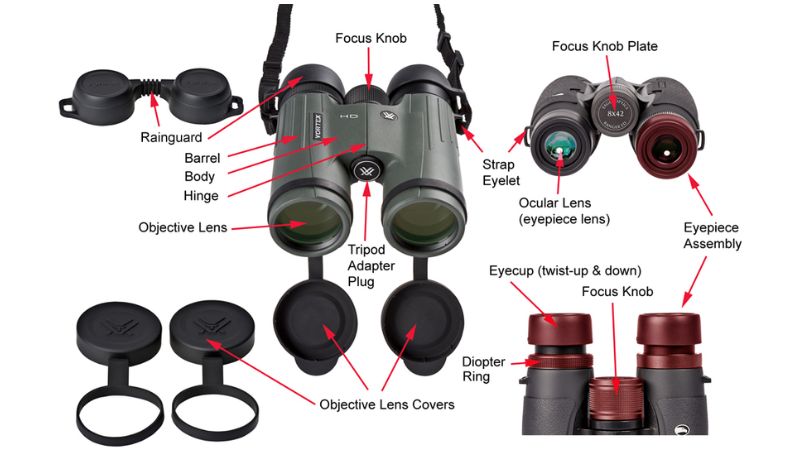
A. Proper Handling and Maintenance
To get the best use out of your binoculars, it’s important that you handle them with care. Always grip them firmly but gently when in use and store them in a protective case when not needed. Cleaning should be done with a soft, lint-free cloth and any dust should be gently blown off instead of wiped to avoid scratching the lenses.
B. Adjusting Focus for Your Eyes
Focusing your binoculars is key to getting a clear, sharp image. Start by adjusting the central focus wheel while keeping both eyes open. Once the image is clear, close your right eye and adjust the left eyepiece until the image is in sharp focus. Repeat the process with the right eyepiece and your left eye closed.
C. Eyepiece Diopter Adjustment
The diopter adjustment is used to compensate for the differences between your two eyes. Once you’ve adjusted the focus for your eyes as described above, use the diopter adjustment (usually located on the right eyepiece) to fine-tune the focus until you can see a sharp image with both eyes open.
D. Avoiding Common Mistakes
Remember not to touch the lenses with your fingers to avoid smudging. Also, refrain from using your binoculars in heavy rain or submerging them in water, unless they are waterproof. When looking at bright objects such as the sun, be careful not to damage your eyesight.
E. Tips for Stabilizing the Image
Stability is key to a clear image. Try to support your elbows on a steady surface. If necessary, use a tripod to stabilize the binoculars. Breathe evenly and don’t rush – a steady gaze will bring more details into view.
Applications of Binoculars
Binoculars are far more versatile than most give them credit for. Their ability to bring far-off details into sharp focus make them an essential tool in numerous activities and professions. Here are a few:
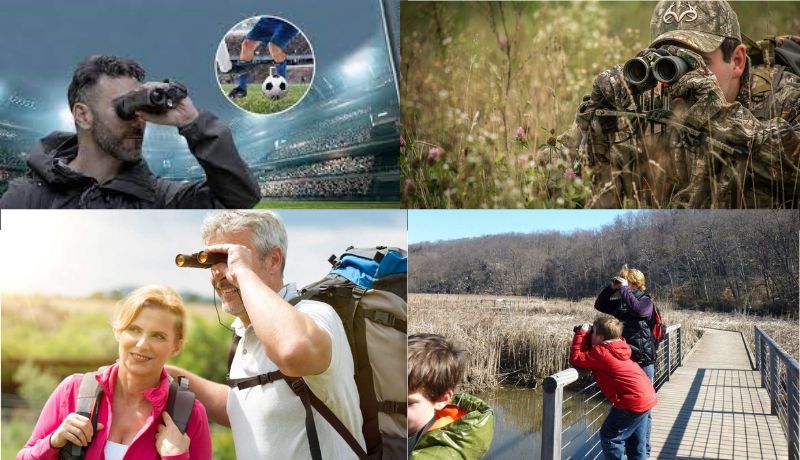
- Birdwatching: One of the most popular uses of binoculars is birdwatching. Whether you’re a casual backyard observer or a committed twitcher, having a pair of binoculars can help you identify species from a distance without disturbing them.
- Stargazing: With the right pair of binoculars, you can spot celestial bodies like the moon, planets and even distant galaxies. They’re a great starting point for amateur astronomers.
- Hunting: Binoculars assist hunters in spotting and tracking their prey from a safe and respectful distance. Specialized hunting binoculars often come with added features such as rangefinders.
- Sports and Concerts: Binoculars can enhance your viewing experience at sports events or concerts, helping you get up close and personal with the action, no matter where your seat is.
- Travel and Hiking: Binoculars are a great travel companion, especially for nature trips or safaris where wildlife spotting is a major part of the experience.
- Marine Use: Marine binoculars, typically waterproof and rugged, allow sailors and marine enthusiasts to navigate and spot distant ships, buoys and wildlife.
- Military & Law Enforcement: In these fields, binoculars are used for surveillance, reconnaissance and target identification, often incorporating advanced technologies for night vision and thermal imaging.
- Photography: With digital binoculars, you can capture high-resolution photos and videos of distant subjects, making them a fantastic tool for wildlife photographers and videographers.
Conclusion:
So there you have it – binoculars, far from being just an old-school gadget, are a game-changer in a variety of fields, bringing the far-off world into sharp, accessible focus. Whether you’re planning a bird watching expedition, setting sail on the open sea, or simply wanting to get a closer look at the stars, a pair of binoculars can enhance your experience exponentially.
Just remember, like any tool, their effectiveness is largely dependent on how you use them. So, handle with care, adjust your focus patiently and never rush the process. Plus, it’s always worth taking the time to research and find the pair that’s tailored to your needs – trust us, your future self will thank you!
